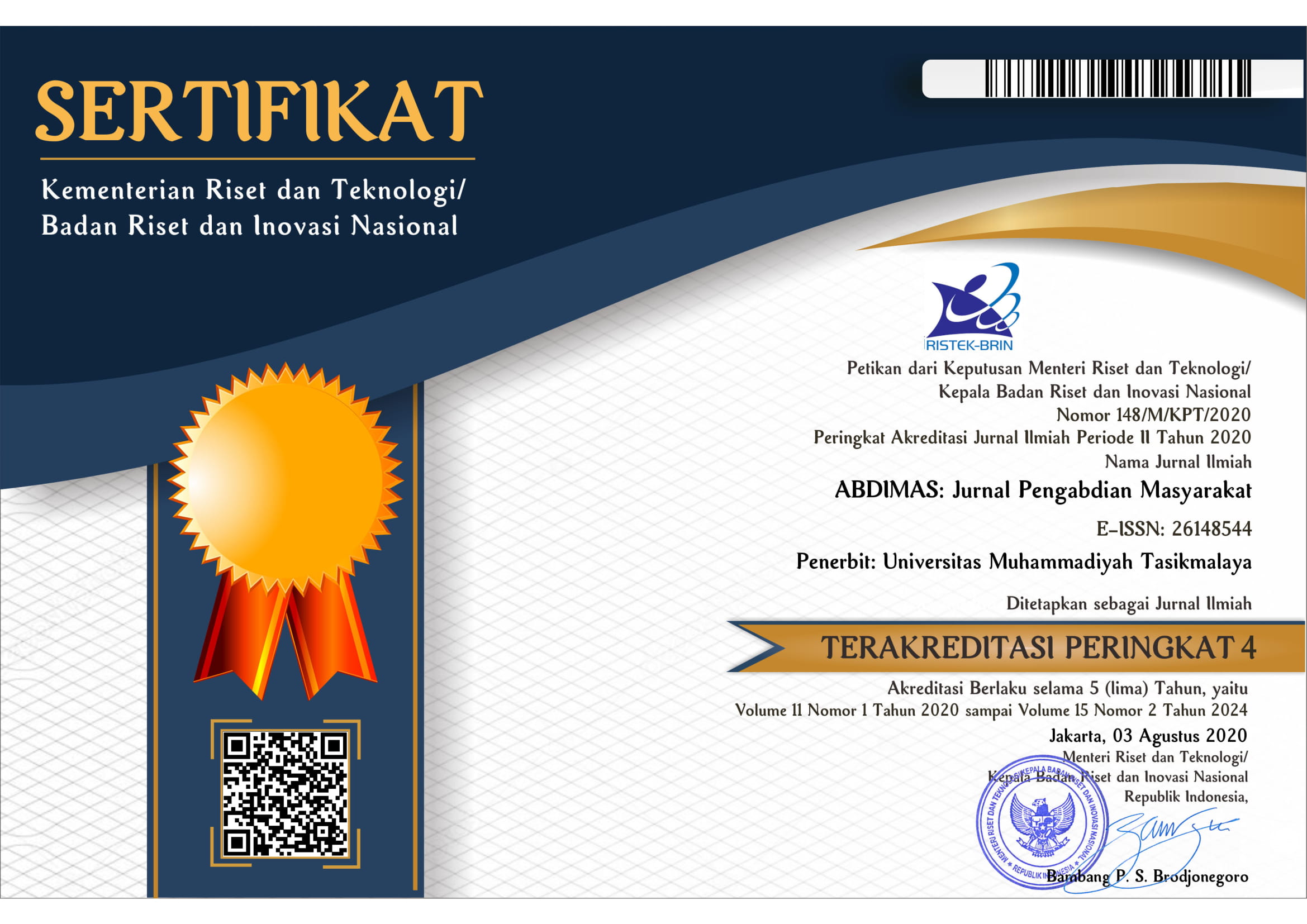Play Therapy with Puzzle Media to Improve Fine Motor Skills for Pre-School Children at Madrasah Cempaka
DOI:
https://doi.org/10.35568/abdimas.v5i2.2403Keywords:
Terapi Bermain, Puzzle, Peningkatan Motorik HalusAbstract
Play therapy is a form of counseling or psychotherapy using games. There are many kinds of game media that train fine motor skills, one of which is using puzzle media. Media Puzzle is a game in the form of random pieces of pictures, the stages of playing are starting by arranging the pieces of the picture into a complete picture, with the aim of improving children's motor and cognitive skills, solving problems, practicing patience and cooperation with friends. The purpose of this play therapy activity is to improve children's fine motor skills through play therapy using puzzle media. This service method is collaborative, with a play therapy approach involving writers and classroom teachers, with 20 preschool-age children participating. This activity was divided into 4 groups and was held on May 14, 2022, at Madrasah Cempaka. After the play therapy activity was completed, an award was given as an appreciation. The results of this activity showed that all participants when the play therapy activity took place actively participated in playing using puzzle media and the children were very enthusiastic and felt happy doing the play therapy activity. Based on the evaluation of the KPSP questionnaire from this activity, each child has different accuracy, but it can be concluded that overall pre-school-age children at Madrasah Cempaka have fine motor categories according to their age development.
Downloads
References
Firmansyah, A., Setiawan, H., Suhanda, S., Fitriani, A., & Roslianti, E. (2018). Pendidikan Kesehatan kepada Keluarga “Perawatan Luka Pasca Khitan Metode Konvensional yang Optimal”. ABDIMAS: Jurnal Pengabdian Masyarakat, 1(2), 53-56.
Hidayati, N. O., Sutisnu, A. A., & Nurhidayah, I. (2021). " Efektivitas Terapi Bermain Terhadap Tingkat Kecemasan Anak Yang Menjalani Hospitalisasi ". Jurnal Keperawatan BSI, 9(1), 61–67. Http://Ejournal.Bsi.Ac.Id/Ejurnal/Index.Php/Jk
Lowth, M. (2014). Understanding Autistic Spectrum Disorder. Practice Nurse, 44(7), 72–76. Https://Doi.Org/10.12968/Ftoe.2004.4.3.17917
Rukmi, D. K., Dewi, S. U., Pertami, S. B., Agustina, A. N., Carolina, Y., Wasilah, H., Jainurakhma, J., Ernawati, N., Rahmi, U., & Lubbna, S. (2022). Metodologi Proses Asuhan Keperawatan. Yayasan Kita Menulis.
Sandriani, S., Nurherliyany, M., Permatasari, W., Wahyuni, A. N., Zuvita, E. D., Putri, R. N., ... & Firmansyah, A. (2022). Terapi Bermain dengan Media Playdough untuk Meningkatkan Motorik Halus pada Anak Usia Pra Sekolah di TK Angkasa Langensari. KOLABORASI JURNAL PENGABDIAN MASYARAKAT, 2(4), 343-349.
Silvia, A., Nigusyanti, A. F., Noorsopia, M., Amelia, T., & Firmansyah, A. (2022). Permainan Ular Tangga untuk Edukasi Disiplin Membuang Sampah. KOLABORASI JURNAL PENGABDIAN MASYARAKAT, 2(1), 27-32.
Studi, P., Keperawatan, I., Kedokteran, F., Sam, U., & Manado, R. (2015). " Perbedaan Terapi Bermain Puzzle Dan Bercerita Terhadap Kecemasan Anak Usia Prasekolah (3-5 TAHUN) Selama Hospitalisasi Di Ruang Anak RS TK. III. R. W. Mongisidi Manado Inggrith Kaluas Amatus Yudi Ismanto Rina Margaretha Kundre ". Ejournal Keperawatan, 3, 1–8.
Sutinah, S. (2019). " Terapi Bermain Puzzle Berpengaruh Terhadap Kemampuan Memori Jangka Pendek Anak Tunagrahita ". Jurnal Endurance, 4(3), 630. Https://Doi.Org/10.22216/Jen.V4i3.4385














